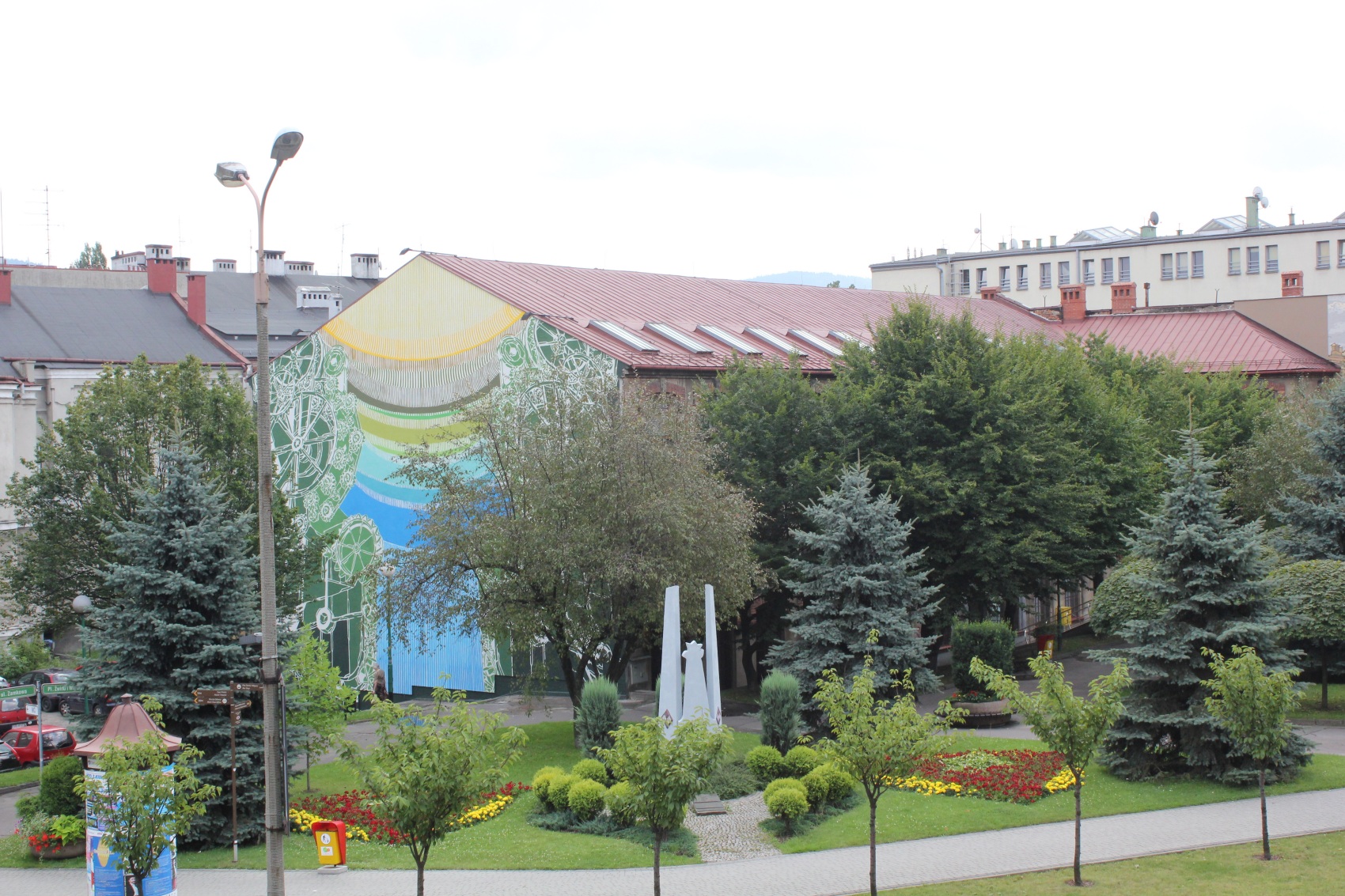It is just a short drive from the Czech border. Bielsko-Biała is a city that will appeal to fans of architecture, lovers of fabulous scenery and history. We have put together suggestions of places to see here. The attractions can be successfully visited in one day, but we encourage you to stay longer
Although Poland is a lowland country, the relief of Bielsko-Biała makes you feel as if you are in a Southern European country. Within the city’s boundaries there are upland and mountainous areas, so while walking along the streets you can observe the nearby hills and peaks. The city boasts as many as fourteen peaks located within its borders. The Biała River, a tributary of the Vistula, also flows through Bielsko-Biała. The river is the historical border between Silesia and Lesser Poland. The mountainous terrain influenced the urban layout of the city, whose most intensive development took place in the 20th century
Bielsko-Biała has a rich history. The city was formed from the merger of Bielsko and Biała. The first written mention of Bielsko as a city dates back to 1312. Biała, on the other hand, was first mentioned in 1564. Formally, Bielsko-Biała was founded in 1951, when Bielsko and Biała were administratively merged. In the 20th century, the city was enlarged, the nearby villages were joined and today administratively it consists of 30 settlements. At the same time, there is a division into register precincts, the boundaries of which coincide with the boundaries of the former settlements
Bielsko-Biała and its historical urban layout
The unique street layout is a testimony to the development of the city over the last centuries. The urban layout of the central part was formed at the end of the 18th century and is connected with the Central Galician route, which was under construction at the time. This route was 400 km long and connected Biala with Lviv. Part of the route is 11 Listopada Street, which today is the main promenade of Bielsko-Biała. At the end of the 19th century and at the beginning of the 20th century there was intensive industrial development in Bielsko and Biała. Not only factories were built, but also magnificent villas of industrialists, rich tenement houses and impressive public edifices, such as the municipal theatre in Bielsko or the new Bielsko-Biała town hall. The buildings, thanks to their rich ornamentation, made Bielsko and Biała known as “Little Vienna”. The architects Emanuel Rost senior, Karl Korn and Emanuel Rost junior worked here at the time. The revolution came in 1899, when an urban regulation plan was prepared by the Viennese urban planner Maks Fabiani
Maks Fabiani’s vision looked far into the future. The Slovenian-Italian architect and urban planner wanted to prepare Bielsko for intensive development and to put the city in order. He drew up a plan in which he set out the directions for spatial development. The city was to become an architectural pearl. However, the plan for change was only partially realised
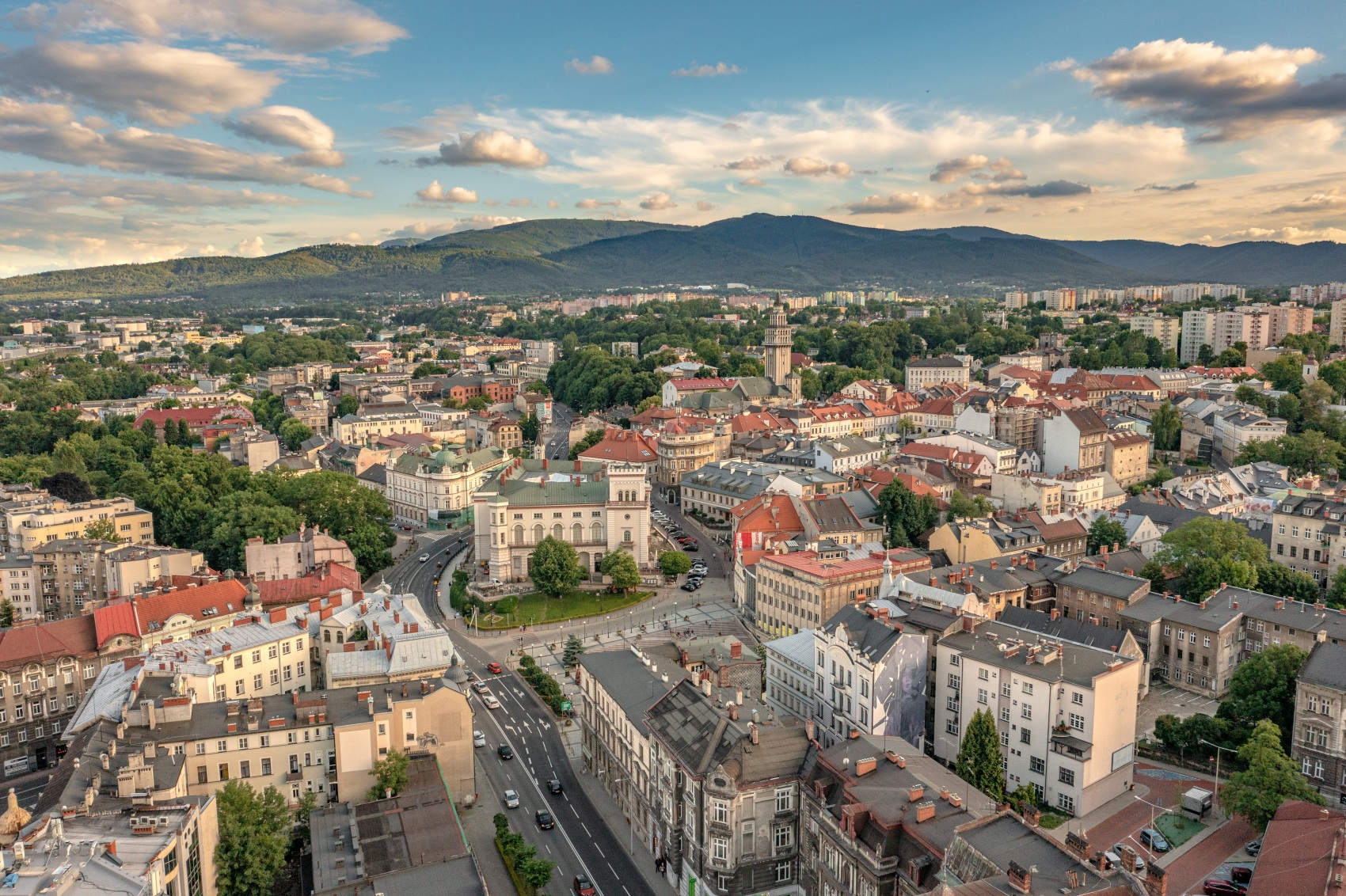
After the opening of the new railway station on the northern outskirts of Bielsko in 1890, the Lower Suburb began to grow towards it. Schools, public edifices, large townhouses and villas were built. The ordinary dirt road leading to the railway station was transformed into a representative avenue (today it is 3 Maja Street). The architecture of the new buildings was aesthetically reminiscent of the buildings in Vienna – a fact which further enhanced the use of the term “Little Vienna”
The urban development plan called for the existing buildings to be tidied up and the main streets to be marked out. Several small streets were to be removed by widening neighbouring streets. In addition, new pavements were to be built. In Fabiani’s vision the central point of Bielsko was to be the Töpferplatz (today’s Chrobry Square). From this square the streets were to diverge radially. Getting around the city was supposed to be easier – this was to be helped by levelling out the curves, as the city centre is located on numerous hills. A new feature was to be the city’s inner and outer ring roads. These are a kind of expressway. Maks Fabiani designated protected areas – the Old Town was to be free of modern architecture. He also indicated where townhouses were to be built and where industry was to be developed. The project did not lack green areas – the architect was in favour of enlarging the City Park and creating new ones in the areas intended for closure of the cemeteries – the Evangelical and Catholic cemeteries by the Holy Trinity Church
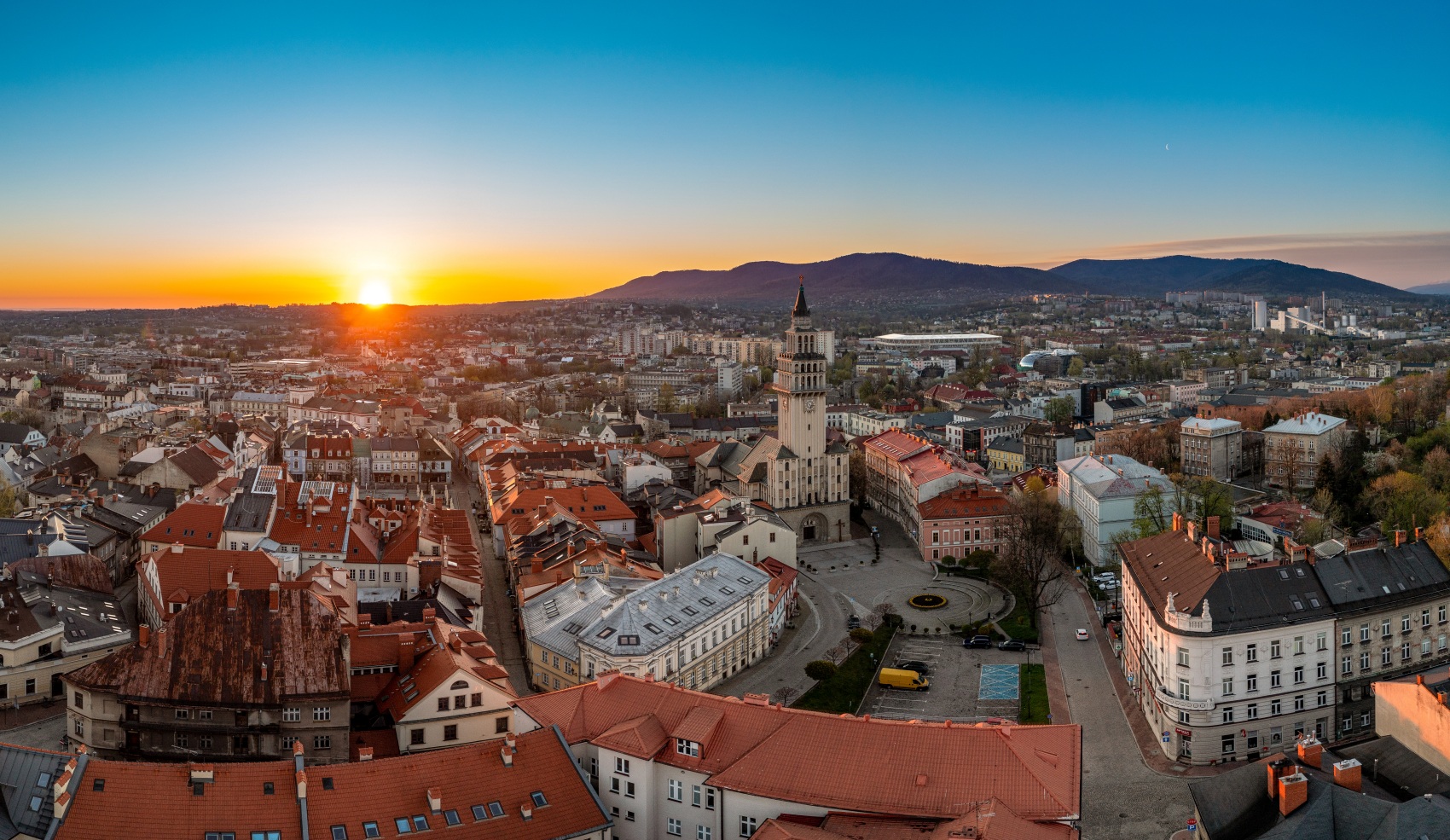
Financing the works proved to be a problem. The city did not have the funds to carry out the project in its entirety. Therefore, the urban regulation plan was reduced and only partially implemented. Instead of two ring roads, only the northern section, 700 metres long, was built (it is a fragment of today’s Piastowska Street). Although the inner ring road was extended after the Second World War, the work was carried out without taking into account the assumptions of Max Fabiani. The new section, almost 2 km long, was built as an extension of Piastowska Street
Fortunately, the vision of separating building zones survived and villas, tenement houses and industrial buildings were built in specific areas – thanks to this, the development of the city is not chaotic, but well thought-out. This has a positive effect on the appearance of the entire city. It is worth finding out for yourself while strolling through the streets of the city centre
Old Factory Historical Museum
Being already in the city centre, we encourage you to go to the area of pl. Żwirki i Wigury 8, where you will find the Old Factory – Bielsko-Biała History Museum. The museum operates in the buildings of an old cloth and woollen goods factory. The factory was founded by the Bielsko-Biała clothier Karol Büttner. The buildings were constructed in the mid-19th century. Interestingly, Büttner’s company had representative offices in Poznań and Gdańsk, exported its products to countries in the Middle East, among others, and the “Bielsko wool” became known the whole world over
Today, the buildings of the former factory house exhibits connected with weaving. These are original machines and equipment that were used in local factories. Here you can learn about the history of the development of the Bielsko-Biała industry and find out how woollen fabrics were made on the historic production line. Those wishing to do so can even try on the fine designs of old hats here!
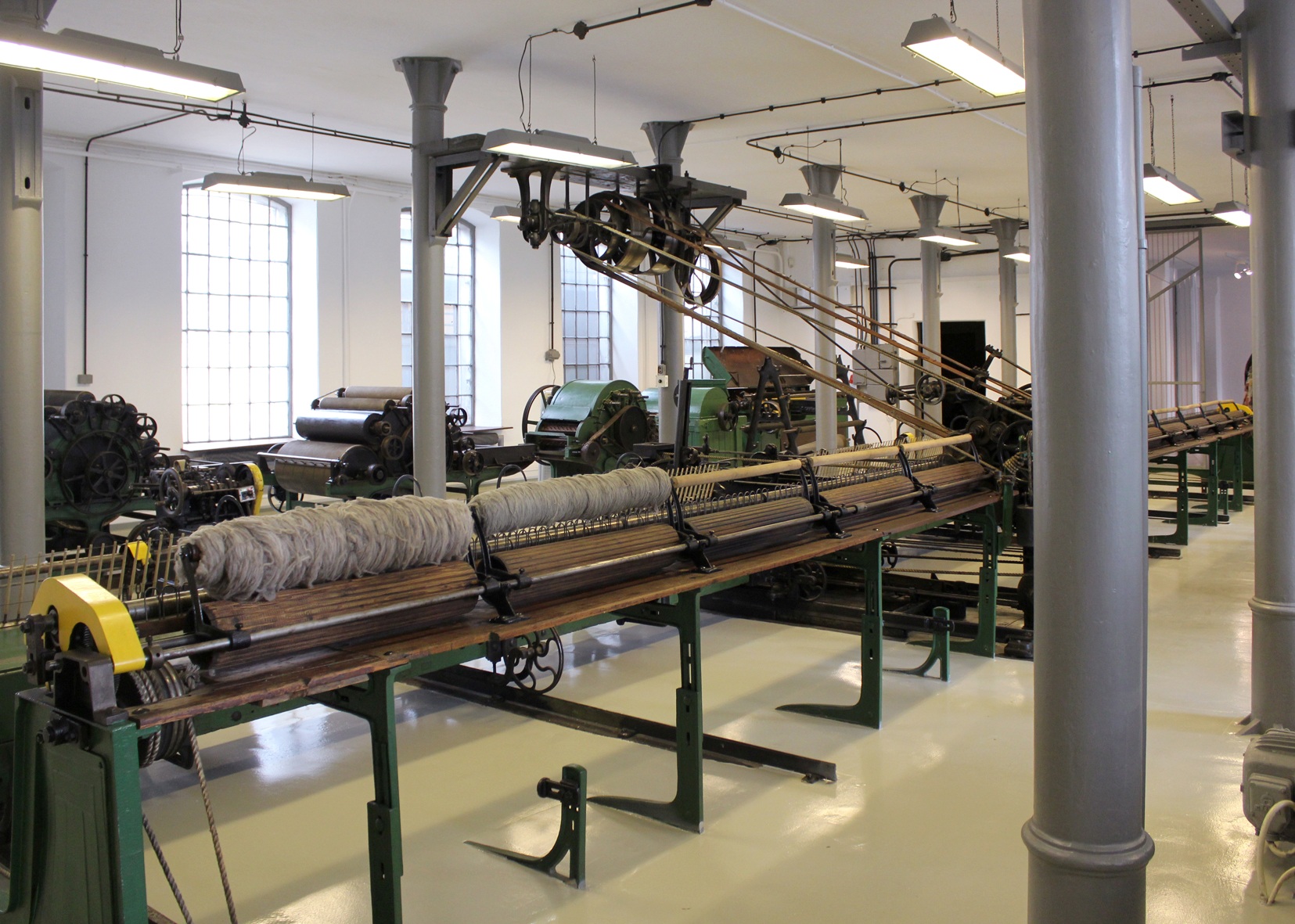
However, that is not all. The museum contains exhibits related to other branches of industry and technology. Items related to the history of firefighting, printing, the metal and machinery industry and the local waterworks are gathered here. The museum also features art. The attic houses the Gallery in the Factory, where temporary exhibitions are presented. You can find out more about the facility on the official website by clicking HERE
Weaver’s House Museum in Bielsko-Biała
The Old Factory will appeal to fans of industrial architecture. A completely different atmosphere prevails at the Weaver’s House Museum. The museum has reconstructed the appearance of an 18th-century clothmaker’s house and workshop. The timber-decorated building is located at 51 Sobieskiego St. This is the area of the Upper Suburbs, where the clothiers of Bielsko lived several hundred years ago. The building is located on the Trail of Wooden Architecture of the Silesian Voivodeship
The simple building in which the Weaver’s House Museum operates is a timber-framed structure with a characteristic gable. In the past it housed a dwelling and a draper’s workshop. In the 20th century a shoemaker’s workshop operated here, and after World War II the building served as a rental house. It was not until the 1990s that the building was adapted for use as a museum. At first, restoration and reconstruction work had to be carried out. The building was opened to visitors in 1992
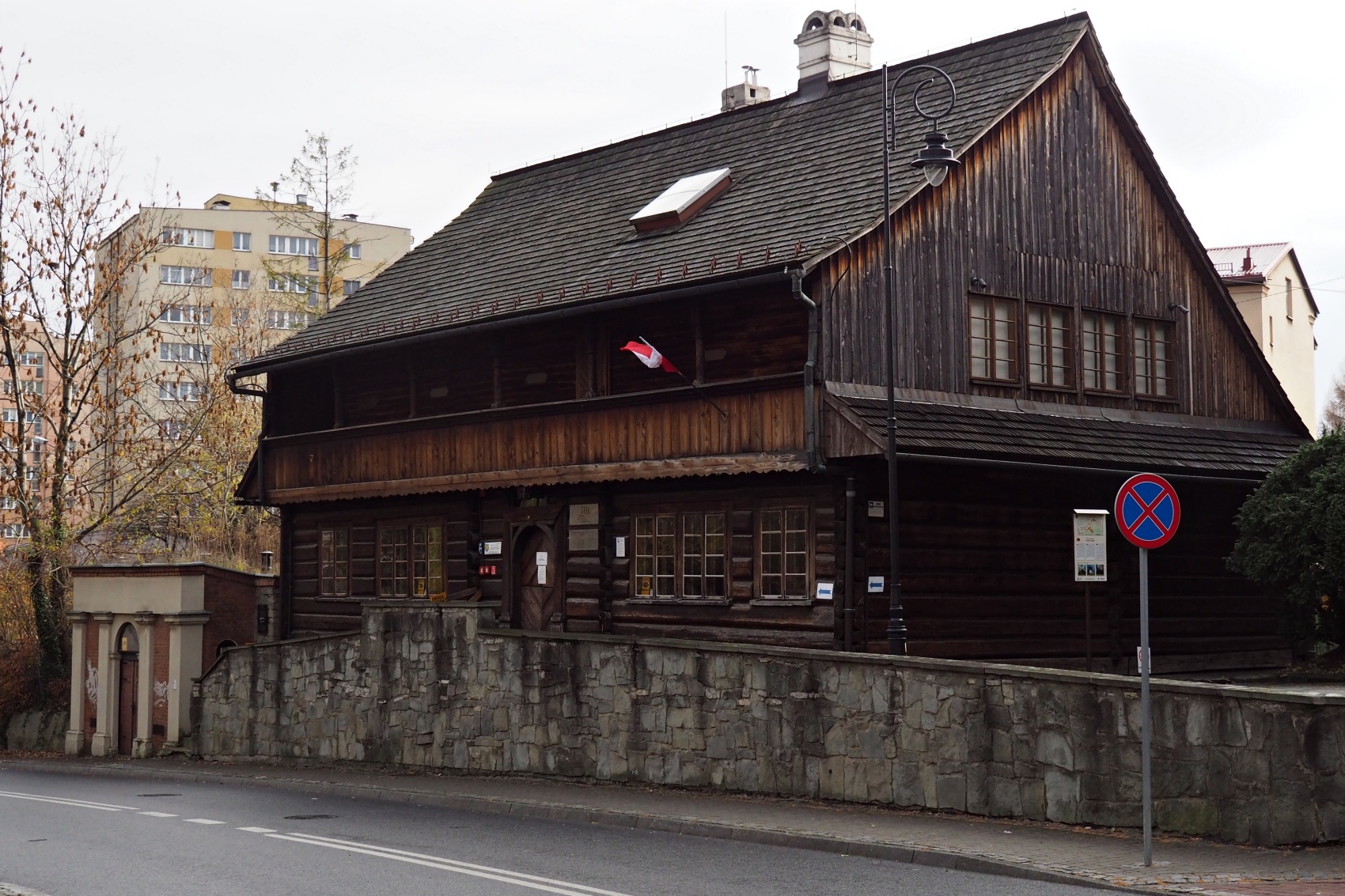
The interior of the Weaver’s House is divided into two zones: the living area and the workshop. The appearance of a draper’s workshop has been meticulously recreated there, thanks to which we can learn about the working conditions of craftsmen at the end of the 19th century. Inside, visitors can see, among other things, a huge thread loom from the 18th century. In the living area, on the other hand, we can see original furniture from the turn of the 19th and 20th centuries or the kitchen. Find out more about the Weaver’s House by clicking HERE
These are just some of the attractions you can see while visiting Bielsko-Biała. We hope that our little guide will allow you to discover the nooks and crannies of the city with greater awareness, and that your stay will provide many positive impressions
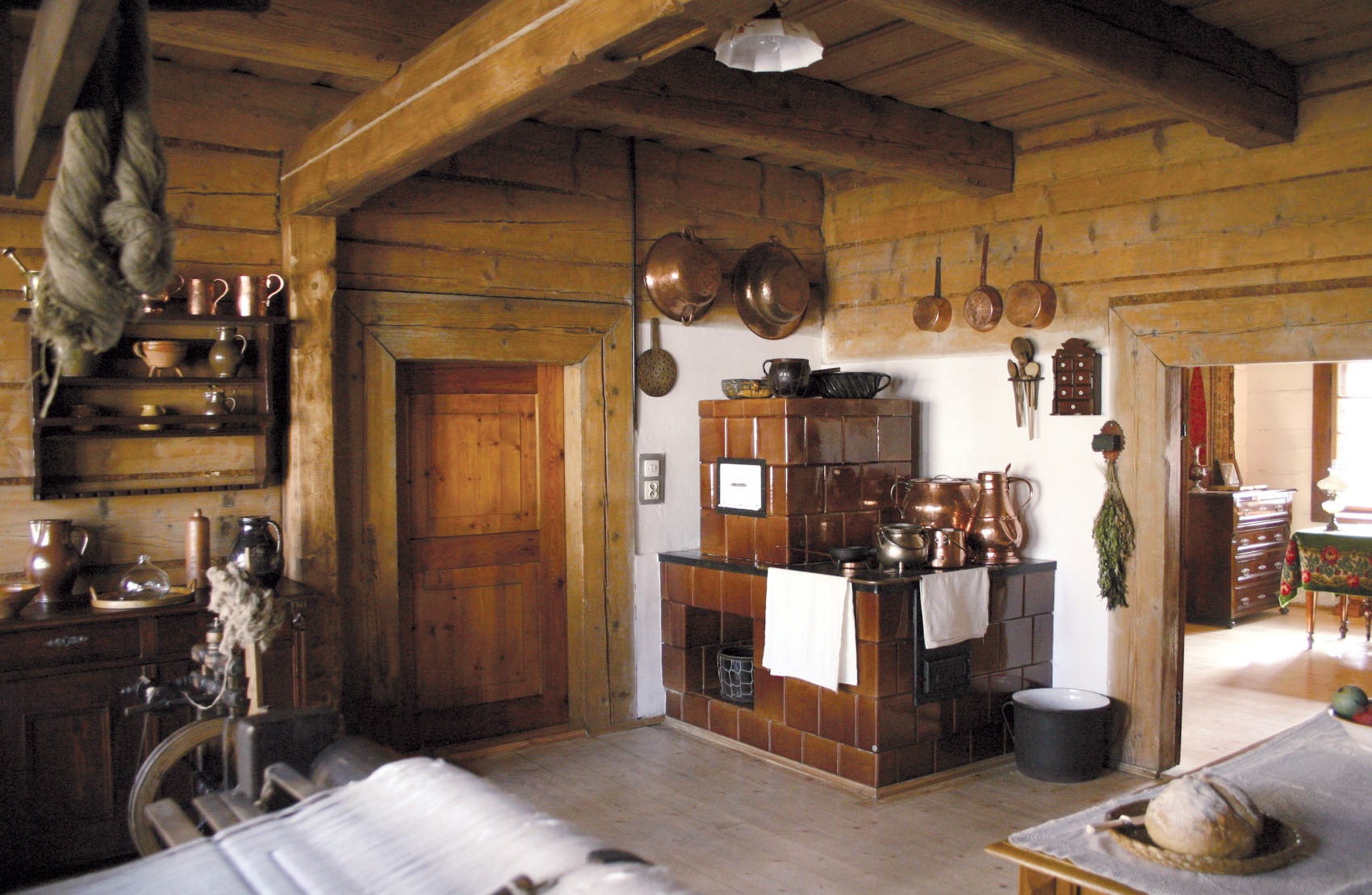
_
Article in Czech version, článek v české verzi
Polsko-české pohraničí a Bílsko-Bělá na víkend – co zde stojí za návštěvu? Máme pro Vás tipy!
By car je to jen pár desítek minut od českých hranic. Bílsko-Bělá je město, které láká fanoušky architektury, milovníky pohádkové krajiny a dějin. Připravili jsme pro Vás seznam míst, která zde stojí za návštěvu.We can visit the monuments in one day, but we recommend that you stay a littlelonger
Přestože je Polsko nížinná země, v Bílsku-Bělé se dzięki místní krajině budete cítit jako v zemích jižní Evropy. The city area is dotted with hills and mountain ranges and, thanks to this, you can walk along the streets to the nearby hills and mountains. Město se může pochlubit až čtrnácti vrcholy, které se nacházejí na jeho území. Bílskem-Bělou protéká řeka Biała, která je přítokem Visly. Řeka je historickou hranicí mezi Slezskem a Malopolskem. The Hornatý terén měl vliv na urbanistické uspořádání města, jehož nejintenzivnější vývoj se odehrál ve 20. století
Bílsko-Bělá má bohaté dějiny, a vzniklo spojením Bílska a Bělé. První písemné zmínky o Bílsku jako městě pocházejí z roku 1312. První zmínka o Bělé pochází z roku 1564. Oficiálně město bylo založeno v roce 1951, kdy byly Bílsko a Bělá administrativně sloučeny. Ve dvacátém století se město rozšířilo, byly k němu připojeny okolní obce. Dnes se skládá z 30 městských částí, a je rozděleno do katastrálních území, jejichž hranice se shodují s hranicemi bývalých obcí
Historické urbanistické uspořádání
A unique network of streets is an expression of the city’s development in past centuries. Urbanistické uspořádání centrální části se vyvinulo na konci 18. století a ovlivnila jej výstavba středohaličské císařské silnice. The route was 400 km long and connected Bělou and Lvov. Součástí trasy je ulice 11. listopadu, která je dnes hlavní promenádou Bílska-Bělé. Na přelomu 19. a 20. století se v Bílsku a Bělé intenzivně rozvíjel průmysl. They were postaveny not only továrny, but also velkolepé vily továrníků, bohaté činžovní domy a nádherné veřejné budovy, třeba městské divadlo v Bílsku nebo nová radnice v Bělé. Thanks to the buildings with magnificent decorations, both towns were known as “Malá Vídeň”. Působili zde tehdy architekti Emanuel Rost (starší), Karl Korn a Emanuel Rost (mladší). Revoluce se odehrála v roce 1899, kdy plán městské regulace připravil vídeňský urbanista Max Fabiani
Vize Maxe Fabianiho sahala daleko do budoucnosti. The Slovakian-Italian architect and town planner wanted to prepare Bílsko for intensive development and to make it more attractive. Vypracoval plán, ve kterém označil směry územního rozvoje. The city was to become an architectural pearl. Plán byl však realizován pouze částečně
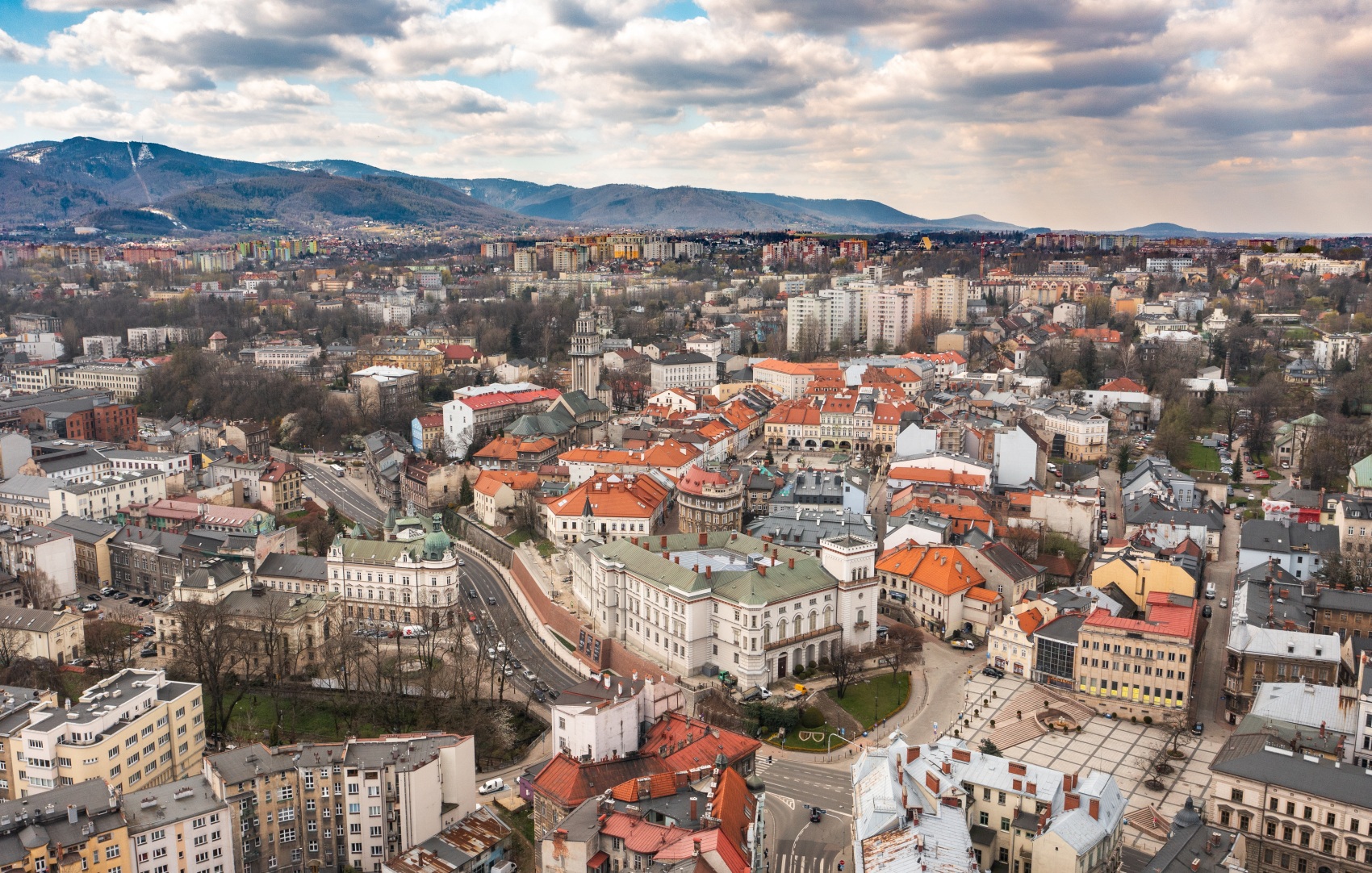
Po otevření nového nádraží na severním okraji Bílska v roce 1890 se začalo vyvíjet Dolní Předměstí. Byly postaveny školy, veřejné budovy, velké činžovní domy a vily. Obyčejná polní cesta vedoucí k nádraží se změnila v reprezentativní třídu (dnes je to ulice 3. května). Nové budovy esteticky odkazovaly na architekturu Vídně, což zvýšilo frekvenci používání termínu “Malá Vídeň”
Návrh urbanistických změn předpokládal uspořádání stávající zástavby a vymezení hlavních ulic. Několik malých uliček mělo být odstraněno rozšířením vedlejších. Kromě toho měly být postaveny nové podníky. Podle Fabianiho, ústředním bodem Bílska měl být Töpferplatz (dnešní Chrobryho náměstí). From the náměstí se měly ulice rozbíhat paprskovitě. Pohyb po městě měl být snazší a pomoct v tom mělo omezení nerovností terénu – centrum se totiž nachází na mnoha kopcích. Novinkou měly být městské obchvaty – vnitřní a vnější, připomínající dnešní dálnice. Max Fabiani vymezil chráněná území, jako třeba Staré Město, ke kterému neměla patřit moderní architektura. Uvedl také, kde se mají stavět činžovní domy a kde se má rozvíjet průmysl. V projekt nechyběly zelené plochy – architekt prosazoval rozšíření Městského sadu a vytvoření nových parků na místech hřbitovů určených k uzavření – evangelického a katolického u kostela sv. Trojice
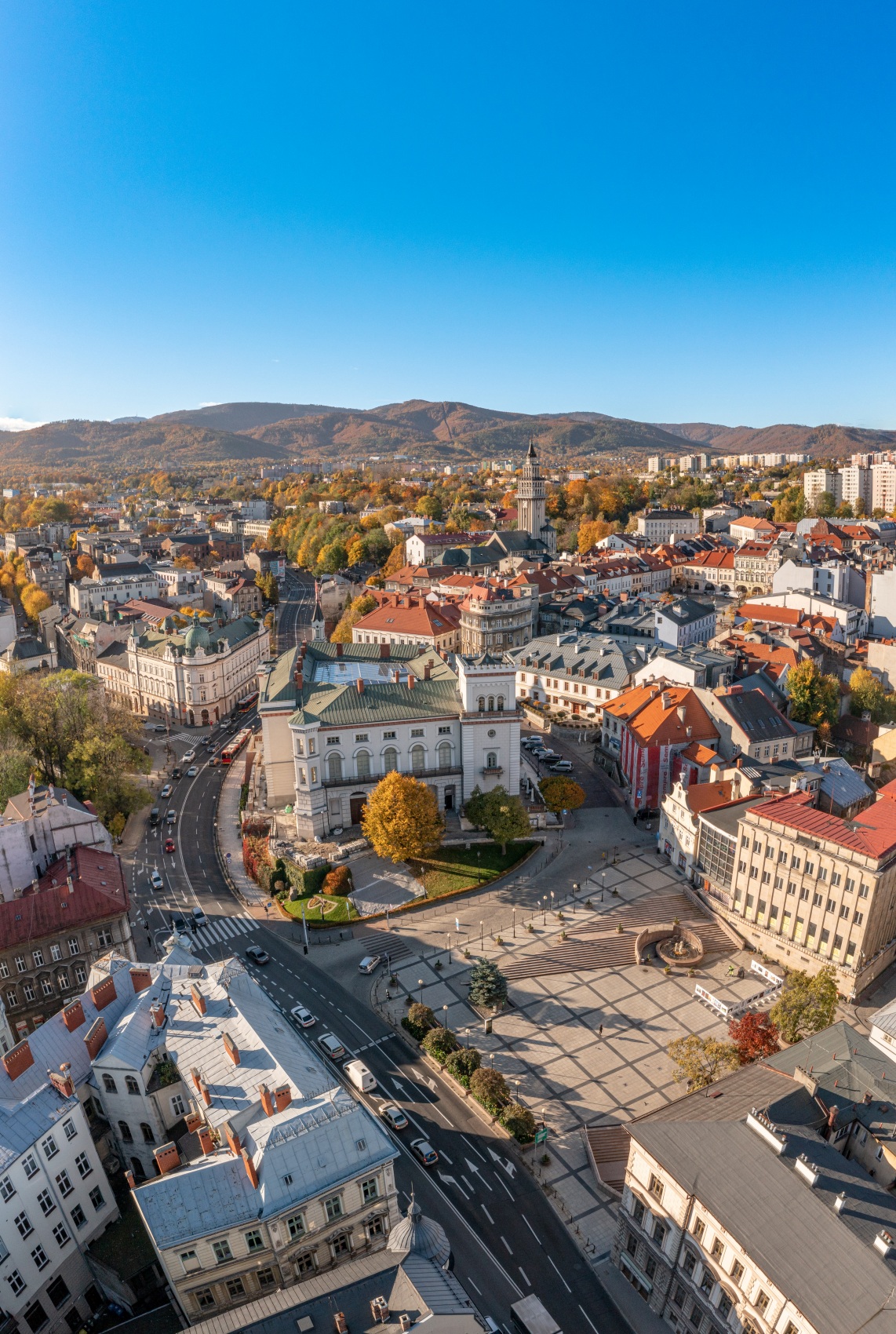
Problémem však bylo financování. Město nemělo prostředky na realizaci celého projektu. Plán byl proto redukován a realizován jen částečně. Namísto dvou obchvatů vznikl pouze severní úsek o délce 700 metrů (část dnešní Piastowské ulice). And když byl vnitřní obchvat po druhé světové válce rozšířen, práce byly provedeny bez zohlednění projekt Maxe Fabianiho. Nový úsek, téměř 2 km dlouhý, vznikl jako prodloužení Piastowské ulice
Naštěstí vize urbanistických zón byla zachována, a proto vily, činžovní domy a průmyslové stavby vznikaly v příslušných částech města. Díky tomu nieení uspořádání města chaotické, ale promyšlené, což má pozitivní vliv na vzhhled celého města. You can see it in the streets in the centre
Stará továrna – historical museum
Během prohlídky centra, doporučujeme navštívit náměstí Żwirky a Wigury. Nachází se zde Stará továrna – Historické muzeum v Bílsku-Bělé. The museum is located in the buildings of the old továrny na sukno a vlněné zboží. The továrnu was founded by the Bílský soukeník Karol Büttner. The complex was postaven v polovině devatenáctého století. Büttnerova společnost měla své pobočky v Poznani a Gdaňsku, vyvážela výrobky mimo jiné do zemí Blízkého východu and “bílská vlna” byla celosvětově známá
V budovách bývalé továrny se dnes nacházejí exponáty spojené s tkácovstvím. Jedná se o originální stroje a zařízení, které byly používány v místních závodech. You will learn about the history of the Bílsko-Bělé industry and see how vlněné fabrics were used on historical výrobní linen. Můžete zde dokonce i vyzkoušet unikátní staré klobouky!

A to ještě není všechno. V muzeu jsou vystaveny také exponáty z dalších odvětví průmyslu a techniky. Shromážděny jsou zde předměty související s dějinami hasičství, tisku, kovoprůmyslu, strojírenství a místních vodáren. V muzeu si můžete také prohlédnout umění. V podkroví se nachází Galerie v továrně, kde jsou prezentovány dočasné výstavy. Více o továrně se dozvíte na oficiálních webových stránkách kliknutím ZDE
Muzeum Dům tkalce v Bílsku-Bělé
Stará továrna je ideální pro fanoušky industriální architektury. The Museum of the Dům tkalce má úplně specifickou atmosféru. V muzeu najdete zrekonstruovaný dům z 18. století a dílnu soukeníka. The building decorated with wood is located at 51 Sobieského Street on Horním předměstí, where bílští soukeníci lived before několika sty lety. The museum is a součástí Trasa dřevěné architektury Slezského vojvodství
The single-storey building, in which the Dům tkalce museum is located, is roubená a má charakteristické podkroví. Dříve se v ní nacházel byt a dílna soukeníka. Ve 20. století zde fungovala dílna ševce, a po druhé světové válce budova sloužila jako činžovní dům. Teprve v 90. letech 20. století zde bylo založeno muzeum. Nejprprve bylo nutné provést konzervační a rekonstrukční práce. Pro veřejnost bylo muzeum otevřeno v roce 1992
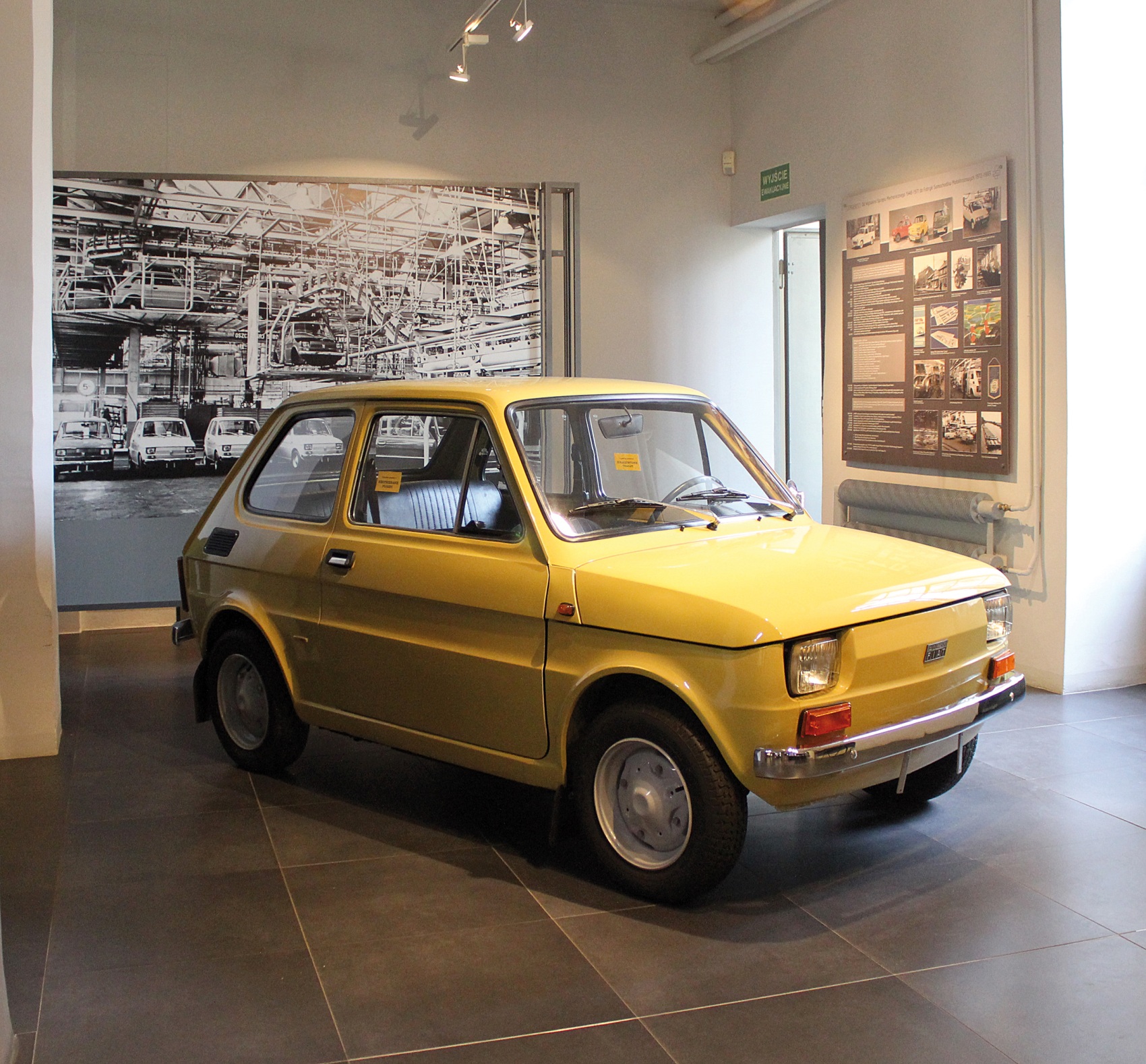
Interiér Dom tkalce je rozdělen do dvou částí – byt a dílna. Pečlivá rekonstrukce dílny soukeníka umožňuje seznámení se s pracovními podmínkami řemeslníků z konce 19. století. Uvnitř uvidíme mimo jiné mohutný tkalcovský stavou s listovkou z 18. století. V obytné části najdeme originální nábytek z přelomu 19. a 20. století a kuchyni. Více o Dom tkalce se DOZVÍTE KLIKNUTÍM ZDE
To jsou jen některé ze zajímavostí, které můžete vidět při návštěvě Bílska-Bělé. Věříme, že díky našemu malé průvodci objevíte i nejskrytější částí města a samotný pobyt na Vás zapůsobí tím nejlepším dojmem
source: Bielsko-Biała City Hall, Bielsko-Biała Historical Museum
Read also: Architecture in Poland | Curiosities | Travel | History | City | Monument | whiteMAD on Instagram
The publication was produced as part of the project entitled “Silesian – Moravian Borderland / Slezsko – Moravské poraniona”, registration number: CZ.11.2.45/0.0/0.0/18_030/ 0001875 co-financed by the European Union from the European Regional Development Fund under the Interreg V-A Czech Republic – Poland programme

The article was written in cooperation with the Association “Beskydy Region”. #spolupracka #hravepohranici #pograniczegramywto


